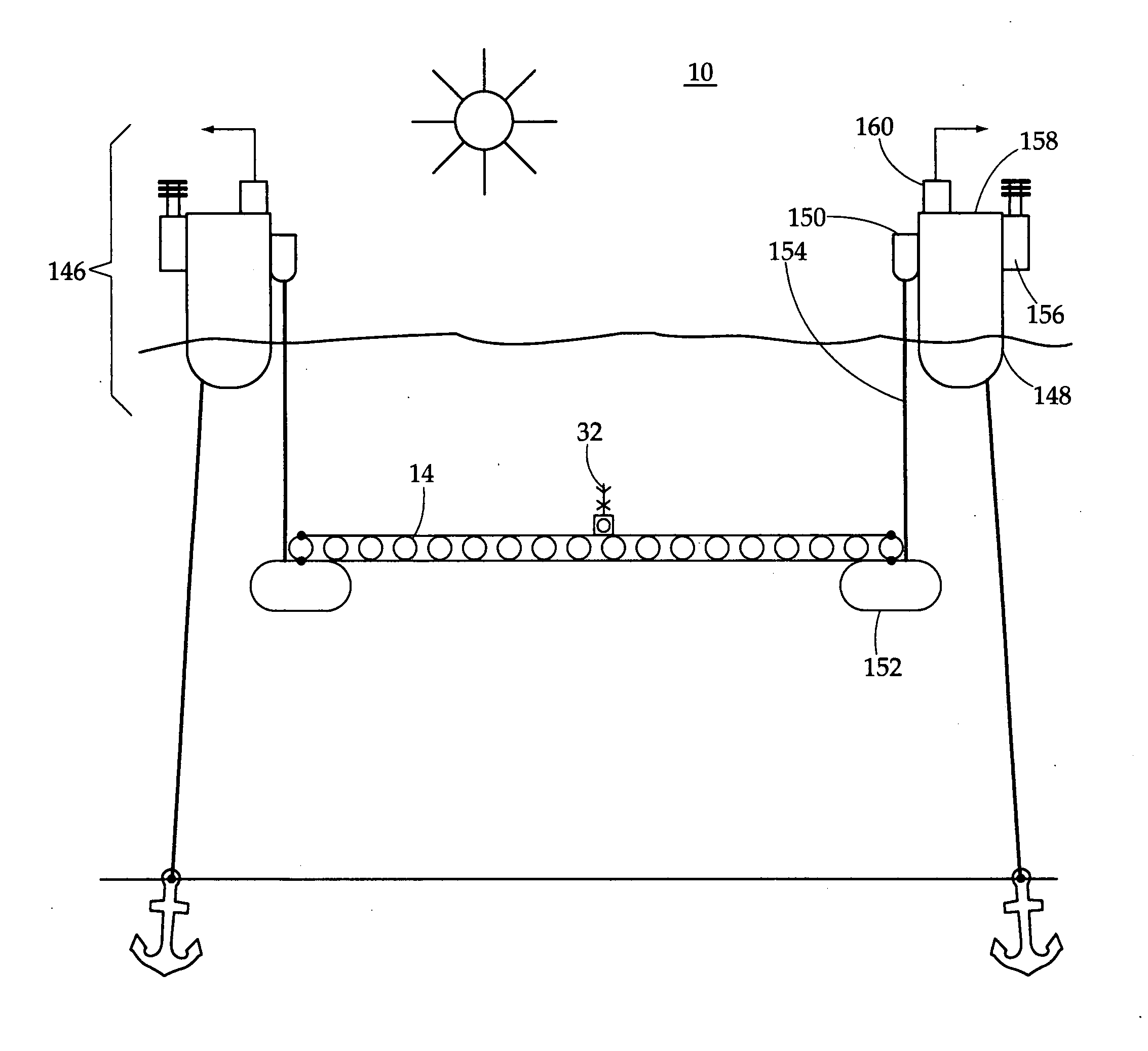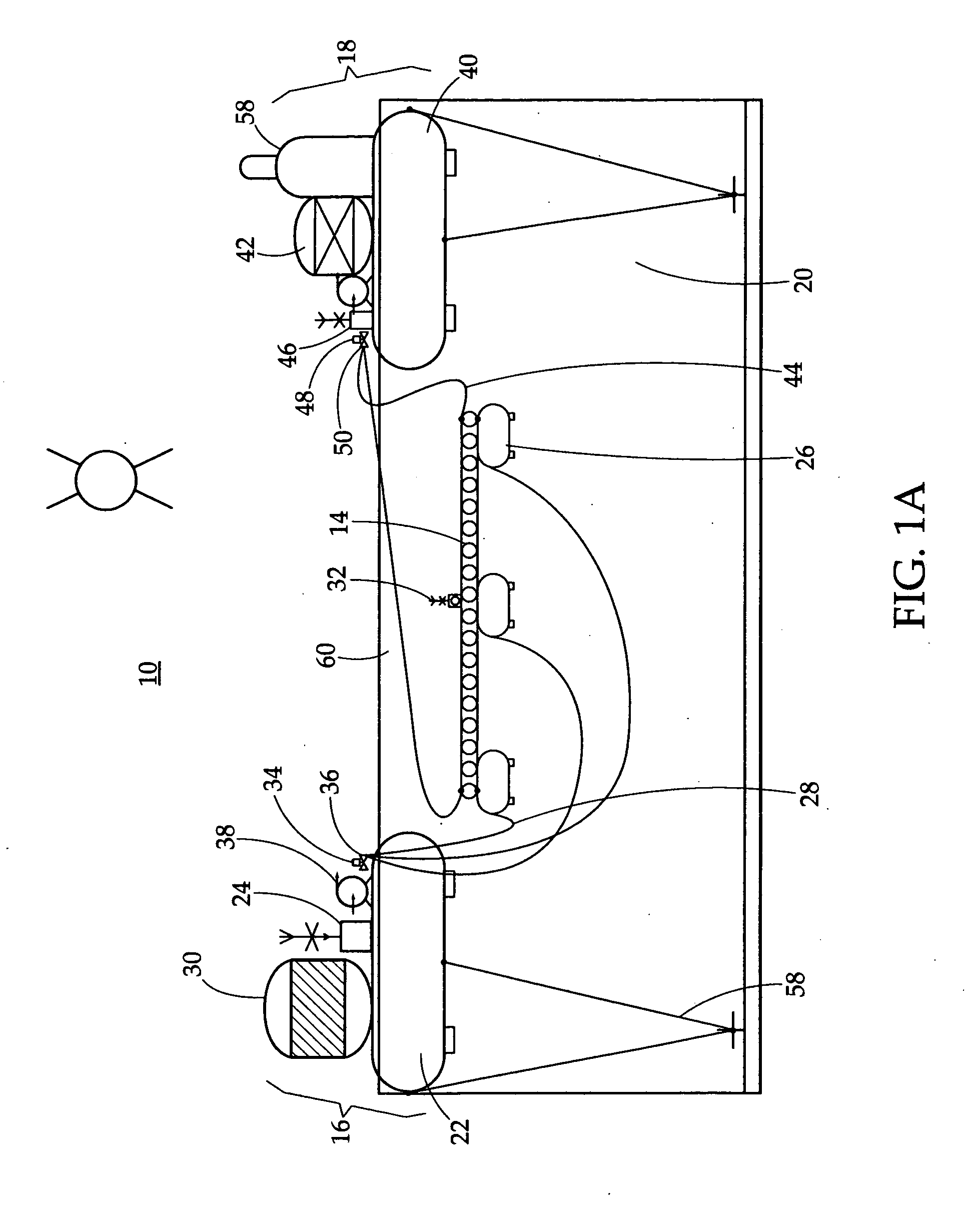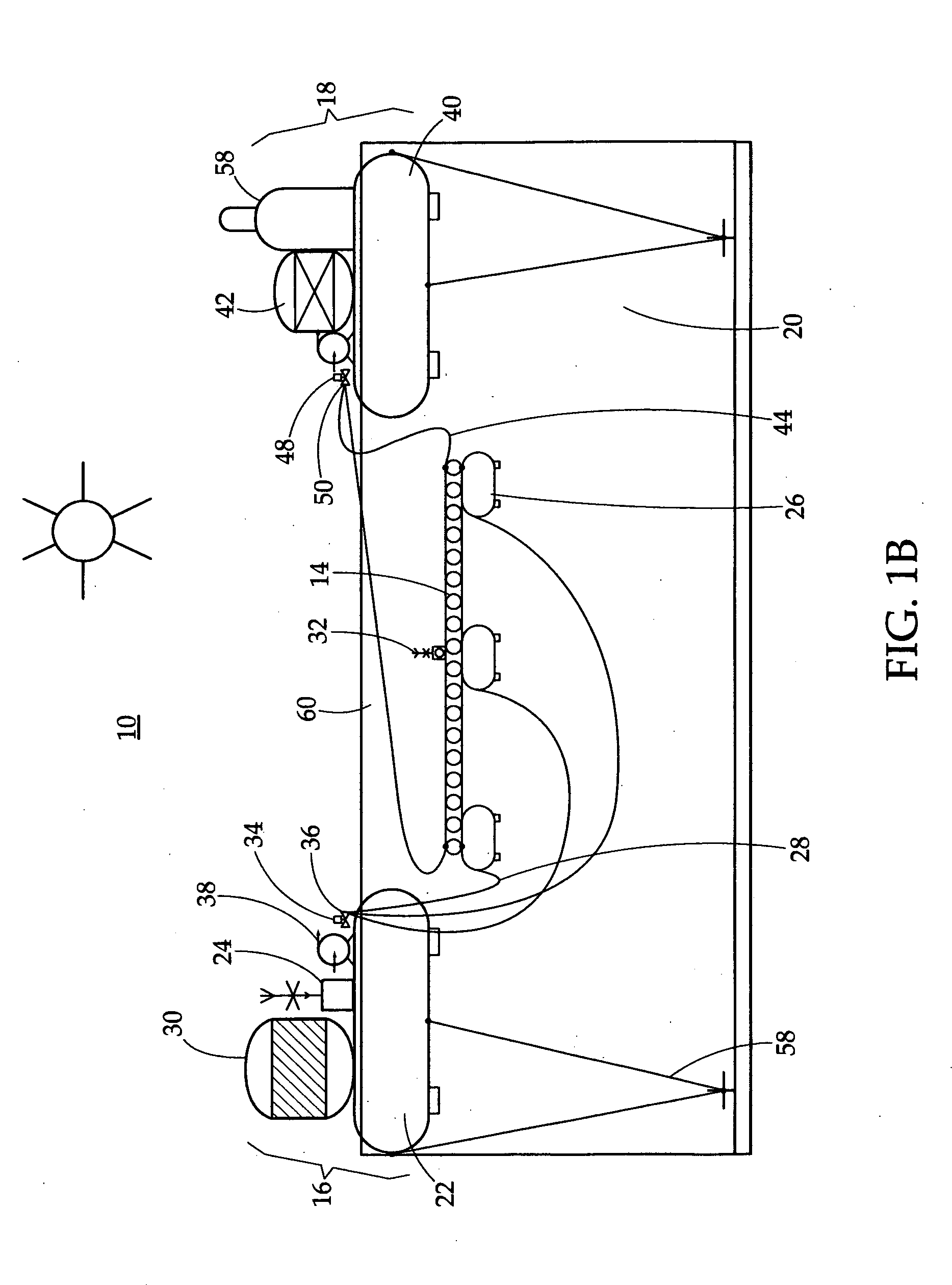Biomass production system
a biomass production and micro algae technology, applied in the field of energy production, can solve the problems of increasing the cost of production, reducing the quantity of biofuel, and unable to meet the short-term energy requirements of fossil fuels obtained from terrestrial plants, so as to reduce the size of new cargo ships, reduce the size of flat or arable land, and increase the value-added area of cargo
- Summary
- Abstract
- Description
- Claims
- Application Information
AI Technical Summary
Benefits of technology
Problems solved by technology
Method used
Image
Examples
Embodiment Construction
[0038]FIG. 1A illustrates a system 10 preferably for light irradiation, wherein the system 10 includes a support structure 12 (see FIG. 2), wherein the support structure 12 is able to accommodate an array of vessels 14 capable of receiving light. The system 10 includes a buoyancy support system 16 and a feeding harvesting system 18, wherein the buoyancy support system 16 is in fluid and data communication with the array of vessels 14 to regulate the amount of light introduced into the vessels 14 within a fluid medium 20. Preferably the fluid medium 20 is a body of water, and in yet a more preferable embodiment, the system 10 is operable in an open body of water such as the ocean.
[0039]The buoyancy support system 16 further includes a floating support 22, wherein the floating support 22 preferably resides on the surface of the fluid medium 20 to provide stability to the system 10 and allow for the array of vessels 14 to remain substantially constant in position. Furthermore, the floa...
PUM
| Property | Measurement | Unit |
|---|---|---|
| time | aaaaa | aaaaa |
| buoyancy | aaaaa | aaaaa |
| depth | aaaaa | aaaaa |
Abstract
Description
Claims
Application Information
 Login to View More
Login to View More - R&D
- Intellectual Property
- Life Sciences
- Materials
- Tech Scout
- Unparalleled Data Quality
- Higher Quality Content
- 60% Fewer Hallucinations
Browse by: Latest US Patents, China's latest patents, Technical Efficacy Thesaurus, Application Domain, Technology Topic, Popular Technical Reports.
© 2025 PatSnap. All rights reserved.Legal|Privacy policy|Modern Slavery Act Transparency Statement|Sitemap|About US| Contact US: help@patsnap.com



